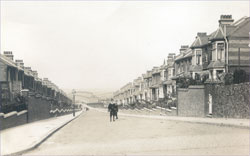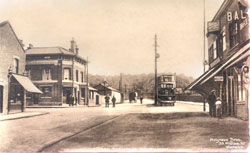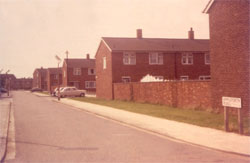History of Abbey Wood
To the east of Plumstead is Abbey Wood, an area that takes its name from the extensive and picturesque ancient woodland to the south, and the remains of Lesnes Abbey to the east. The Augustinian Abbey of St. Mary and St. Thomas the Martyr was founded by Richard De Luci in 1178 and was closed by Thomas Cromwell in 1525. The site was acquired by the London County Council (LCC) in 1930 and opened to the public. The extensive remains are open to the public and artefacts are preserved in the Greenwich Heritage Centre and Bexley Museum Service.
As late as the 1860s the only settlement was a small hamlet clustered around Abbey Wood Station (opened 1849), the Harrow Inn and the Abbey Arms. To the north were the vast Thameside marshlands; to the south the woods. Harrow Manorway gave access to the pasturelands on the marshes; Knee Hill was a steep but rural lane leading to Bostall Heath. The railway line to Erith and Dartford ran dead straight through open and largely unpopulated country. According to George Duckworth, one of Charles Booth’s researchers, in 1900: “The trains are so infrequent and unpunctual that even Woolwich workers are shy of living at Abbey Wood”. Woolwich workers must have been overjoyed when the LCC opened a regular and reliable electric tram service to Woolwich and beyond in 1908. It was only the train service at Abbey Wood that Duckworth criticized. He compared Abbey Wood to the Fen Country and said that the “Air [was] heavy with the scent of flowers”. However, it was not always tranquil in 1900. Duckworth commented on the testing of heavy guns from Woolwich Arsenal: “The first unexpected boom and thud of a big gun makes you jump”.
The first major housing development in Abbey Wood was the Bostall Estate built by the Royal Arsenal Co-operative Society (RACS) between 1900 and 1914. This estate was built on fields formerly belonging to Bostall farm and Suffolk Place Farm, which the RACS acquired in 1886 and 1899 respectively. Chalk, sand and gravel necessary for the construction were excavated on site. Here also the RACS built a piggery, abattoir, and a jam factory.
The local population grew temporarily during World War I when about 7,000 workers were employed at the Kings Norton Metal Company ammunition works. These very dangerous processes were carried out in temporary buildings on the marshes. However, the jobs disappeared when the war finished.
St. Michael’s Parish Church was opened in a temporary building in 1905. A permanent church, designed by Sir Arthur Blomfield, was consecrated three years later, and the original building became the church hall.
The population of Abbey Wood increased dramatically in the 1950s with the building of a new estate by the LCC. The 3,000 dwellings on the Abbey Wood Estate were built between 1956 and 1959 on a large piece of former Royal Arsenal land, which had been released by the Ministry of Defence. A parade of shops, Abbey Wood Library, and William Temple Church (1966) in Eynsham Drive are the focus of the community.
The new residents, drawn from many parts of Inner London, had mixed views about their new environment: many appreciated their modern homes and gardens; others missed the easy access to the amenities and facilities in London and regretted the remoteness of their new homes with riverside marshes to the north and east. Those marshlands have been built over as part of the development of Thamesmead.









